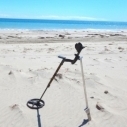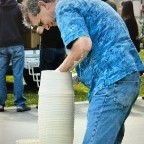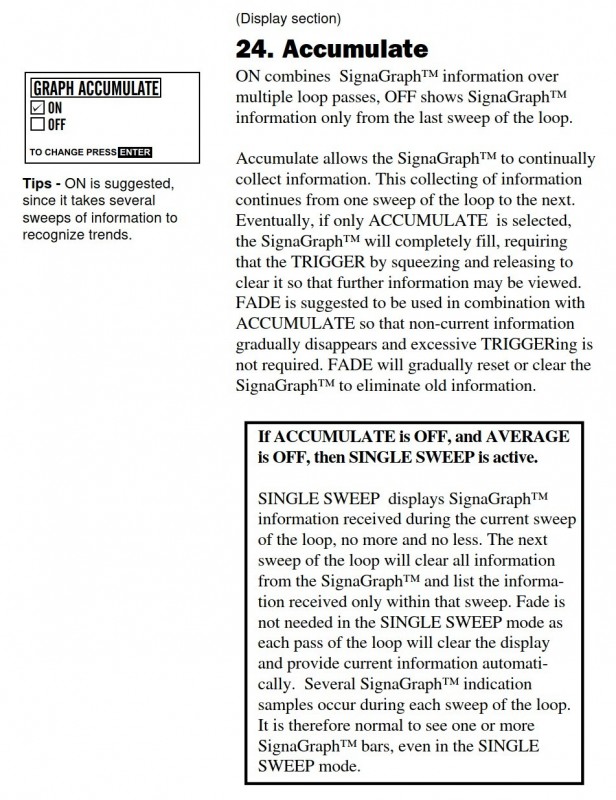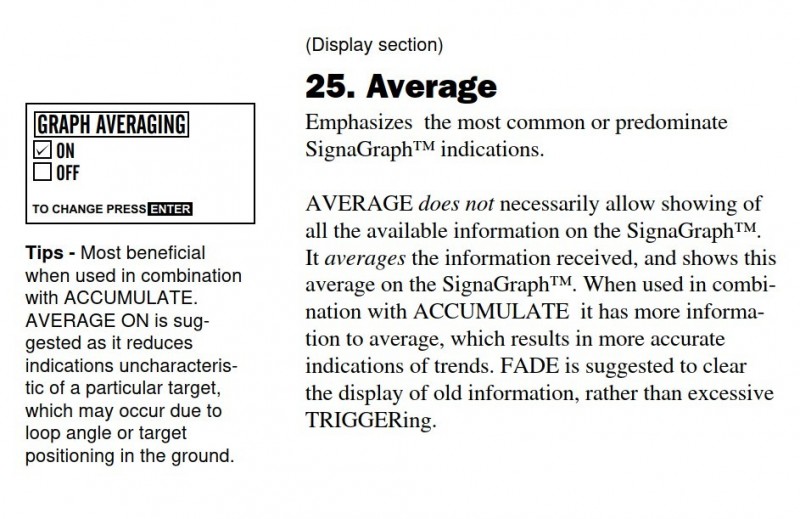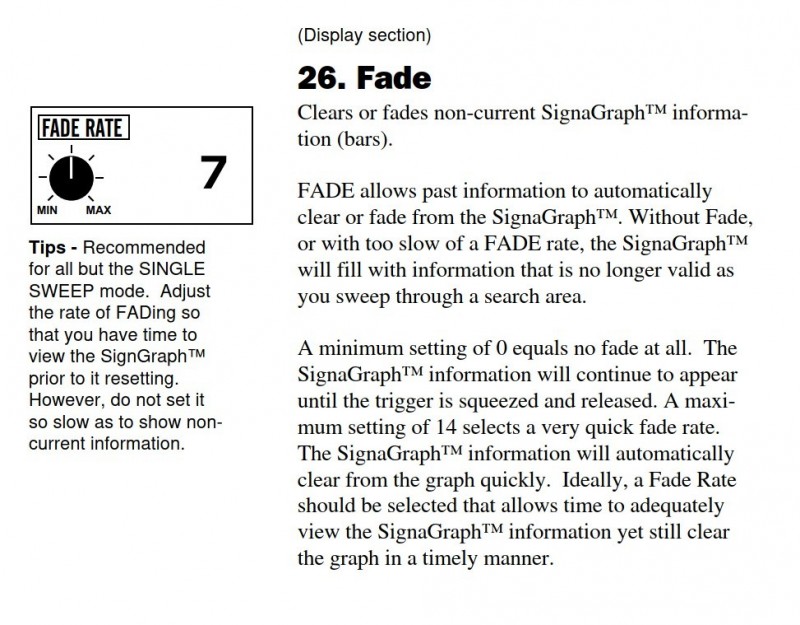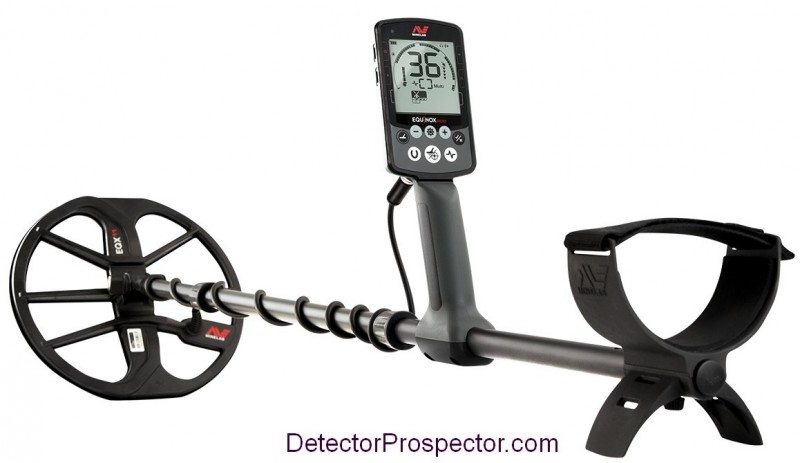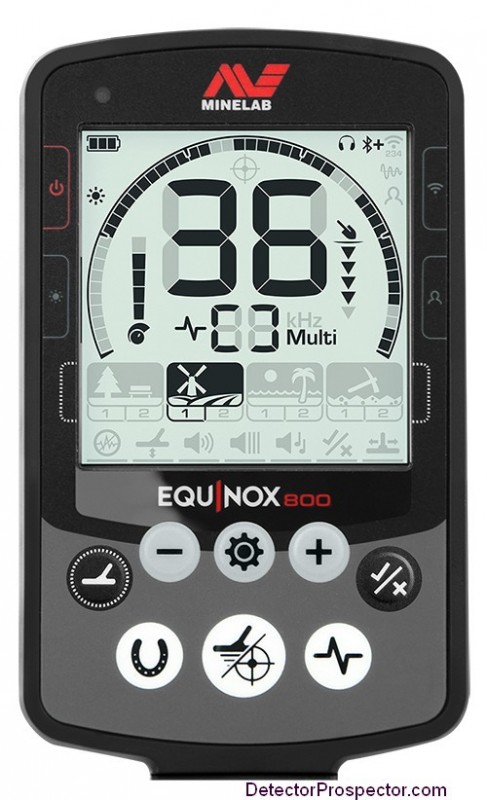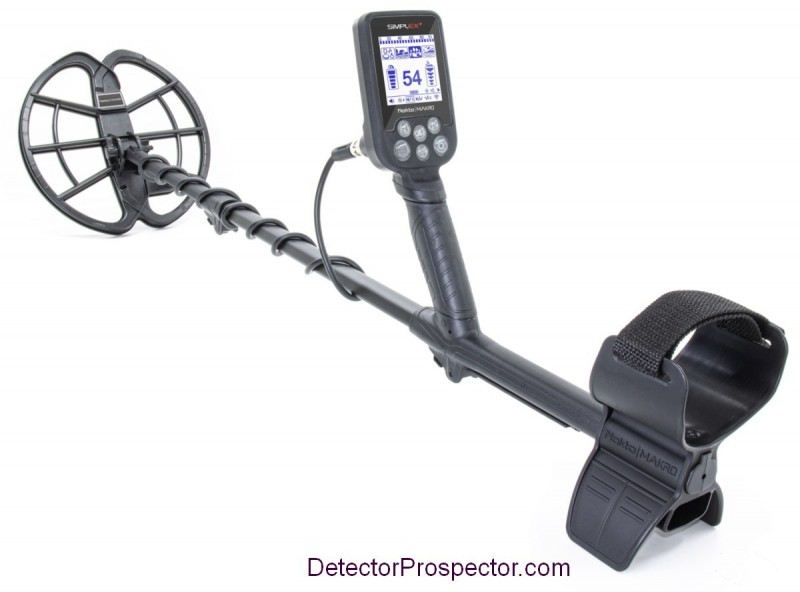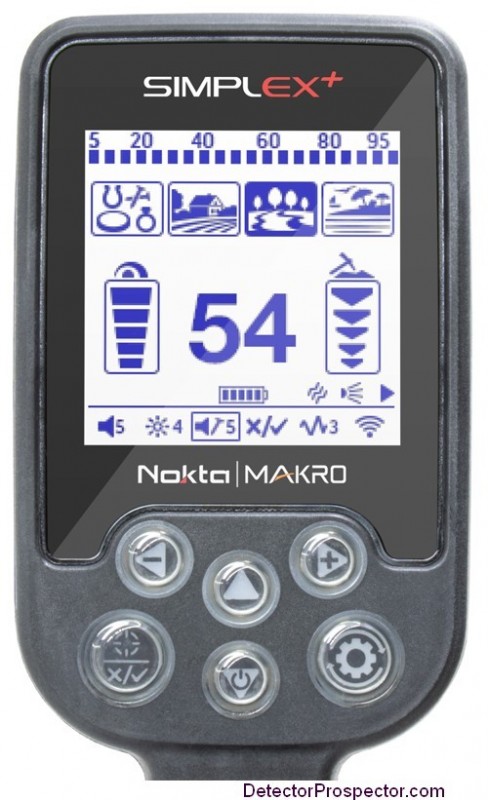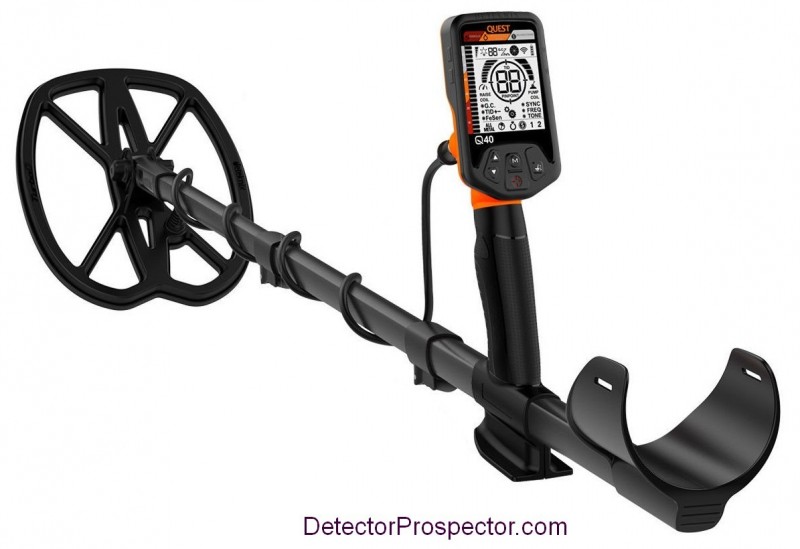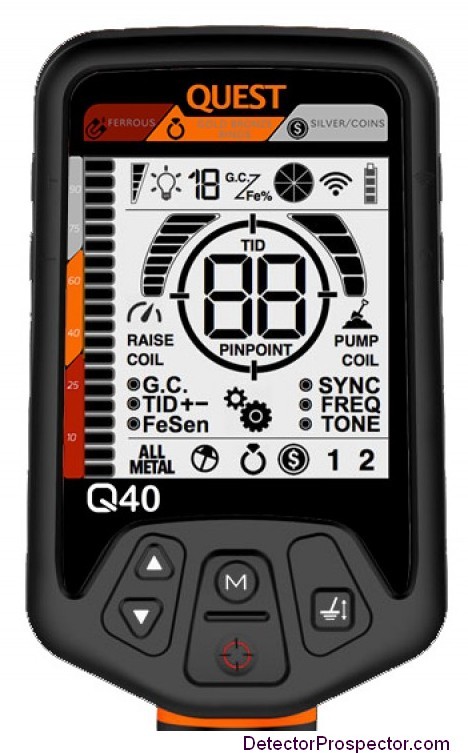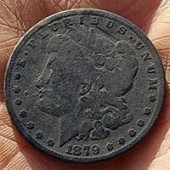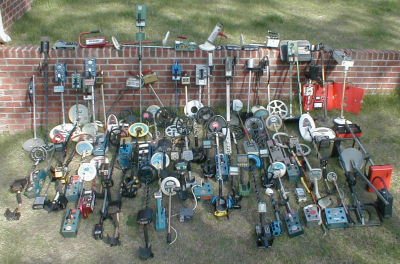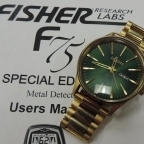Search the Community
Showing results for tags 'detector tech'.
The search index is currently processing. Current results may not be complete.
-
Hey folks, new to the forum here. I am working and playing in the state of Alaska, and live in a decent gold bearing area, but it’s mostly flour gold from glacial dust.... geologically speaking it’s pretty young soil with lower levels of mineralization (I was told). The area was never thoroughly mined, because of the difficulties encountered extracting this fine stuff with old methods. Anyway, I have been picking some old-timer’s brains on how to get started, and he suggested this method for this fine stuff.... he liked to locate the mineralization zones with a detector, then dredge or sluice that. That way he would only process the more concentrated material. There are the occasional nuggets, but very scarce compared to the flour. is this a realistic method for doing a little weekend prospecting? I have been looking into detectors (the last one I had was 15 or 18 years ago and it was a very basic bounty hunter great for a kid, but....) seemingly most detectors are trying to tune out the mineralization, and I am searching for it. I was looking at the gold monster 1000, and equinox, but can’t decide if their advanced discrimination would help or hinder my goals. Any thoughts on this technique, and what machines to consider to achieve the goal? Of course I’d like something that could treasure hunt, and do everything else great too, but I know that’s not usually how this stuff works. Thanks for your time and patience. In the meantime I am going to be educating myself on the forum. Trying to soak up all this knowledge.
-
I just had a pacemaker installed and I’m having trouble finding info on using my metal detectors with it. Just wondering how the detector batteries and EMI will affect my pacemaker. Maybe the only thing I’ll have to worry about is whether it will implode if I swing across a really big nugget? 😳 Hopefully I can keep detecting with no problems from the pacemaker or my heart! Thanks for any input. P. S. I understand if anyone is hesitant to answer because of liability issues. That’s one reason I’m having trouble getting info including from Minelab. Can’t blame anyone for that. Just general info or experiences from anyone that has a pacemaker would help. My doctor has a bad “bedside manner”. The one time I met with him before he slapped it in me was frustrating. He had a standard response to my questions. “Get it or you die”. He is a highly skilled and highly recommended jerk. Maybe I can get some answers on my follow up app’t but not counting on it.
-
Given that the latest crop of detectors can be updated with new features simply by downloading software updates, how long will it be until manufacturers offer a cheap base model with pay as you go additional features and capabilities. Want more tone options, prospecting ability, custom frequencies, simply pay a small fee and download to your detector. On the same token have to ability to remove unused or unwanted features to de-clutter your detector, and with the ability to load them up again at a later date as needed. This would give the ability for a beginner to grow with their simplified base detector, adding new features as experience is gained and as budget allows, whilst still maintaining a budget initial purchase price. We also often talk about detectors being too overwhelming or complicated to learn for newcomers, so sometimes less is more. The downside for manufacturers is that it would do away with multiple models of detectors, often earmarked by minimal incremental changes to justify producing a new or improved detector. Good for the consumer, maybe not so much for profit margins. In a way it is already happening with detectors like the XP Deus, with constant updates to extend the lifespan of the platform, though hardly a budget detector and the updates are actually free. Any extra costs/profits are made via accessory coils and other add-ons like pinpointers vs charging for added features alone (some new features necessitate the purchase of new accessory coils to be activated). You do have to appreciate that the Deus's lifespan amazingly started out in 2009, proof that a single platform can last the test of time and still be relevant even today. Imagine a base version of an improved Simplex with added hardware/software ability to run multi-frequency and/or individual frequencies, then being able to unlock MF ability down the track as budget allows. It is not always the case the one can afford the initial cost of a fully loaded detector out of the box, nor want to purchase multiple detectors to gain added features and performance. Silly idea or does it have some merit?
-
Metal detecting has a lot of jargon that makes little sense to beginners. I’ve thought about starting a list on this website, but the fact is it’s been done in quite a few places already. While I still might put one together myself, for now here is a link that can give you all the definitions anyone might need. Metal Detector Terms & Definitions via Google Tesoro put out a great catalog in 2010 that included a lot of extra information, including a glossary starting on page 58. You can download it for free here.
-
So for you experts on EMI interference. Does EMI effect the powerhead?, coil? or both???? Thanks.
-
I did a quick recording of items I had going from a small nickel silver bead through a screw cap. Total of 20 items 6" away in both all metal mode and discrim mode with disc at min. It is interesting how you can actually see the different sounds and how they have unique patterns. I plan on redoing the test when I can set up outside. There is a lot of emi here and my audio setup was not tuned so I couldn't hear the threshold through the computer even though it was pretty loud on the detector. The audio was also recorded really hot which I will correct next time. Wonder if digital machines have just flat signals with no variation other than tone and volume? I can't record my Garrett as it has a proprietary audio jack.
-
Is there now marketed or has there ever been available a detector which inverts the audio volume scale? Many applications produce better finds from the weaker signals, either because those items are smaller (e.g. micro jewelry) or deeper (e.g. old coins and nuggets). Having to listen through the din of trash to hear the weak signals for most detectors is mentally fatiguing. I wouldn't be surprised if this is/was possible with analog electronics, but seems like a task that digital processing could handle easily(?).
-
I posted this in the vanquish thread but it’s buried fairly deep so I’m asking here too, about the vanquish, it’s multi iq technology rooted in VLF technology or is it something different all together? I was under the impression this is a multi frequency VLF detector that basically samples multiple VLF frequencies simultaneously to better I D targets and while the way it makes this possible is unique the signal would have the same limitation in heavily mineralized soil same as any VLF detector?
-
How many guys would like JUST A BLING BEEPA. Designed completely for recovering jewellery. Having a lower range and medium so you can just get bling with a bit of rubbish included. Come on their from Nokta Makro you guys can do it.
-
Hello All, I am new to metal detecting and looking for some advice. Metal detecting is something I've always wanted to pursue as a hobby, but just never really committed to making the investment. I have a few detectors in mind Minelab Equinox 800 or 600 and Garrett GTI 2500 also open to suggestions but those three seems like decent choices for intermediate. My question is how deep can a standard metal detector detect? There's a bit of backstory here but as a kid, I watched the movie Encino Man. For those unfamiliar the movie is about two teenage friends digging a hole in their backyard for a swimming pool. Hilarity ensues when they unearth an ice-age caveman the rest of the movie is a little fuzzy, but they acclimate their new friend to the modern world. Anyway, after watching this movie I convinced my mom to let us dig a giant hole in the backyard! For some reason she agreed. Probably because it kept us busy and out of the house. So flash forward a bit we have a decent sized hole dug in my backyard. Keep in mind I'm 9-10yrs old (so things seem much larger) but as I remember it the hole was at least 8ft x 5ft and probably 3-4ft deep. This was how I spent my summer vacation, everyday I would go outside and just dig! Then, one morning I hit something! Excited, I ran into the house to inform my mom. What I hit was the side of a metal trashcan. The sort of trashcan Oscar the Grouch lived in on Sesame Street. The can was buried sideways and I brushed away enough dirt to tell it was trashcan but the can was still completely buried. My mom freaked out and forced us to fill the hole (whatever was buried that deep was not meant to be dug up!) After 25yrs the house is now mine and the thought of what could be buried there still intrigues me (hundreds of gold bars perhaps 🤔). The home was constructed in 1940, but built on the property of another home which was constructed much earlier probably 1910s. The older home has been destroyed for years and was demolished to built 8 townhouses/condos. However, the old lady who lived there had been in the house since birth and died at age 98. The townhouses/condos were built in 2007 which suggest a 1910 or earlier date for that home. The old woman did tell us about the area when before all the countless other homes were here. How you could see in any direction for miles. Now you need a drone for that and its nothing but developed land for 50-60 miles in all directions. If I had to guess a date for the trash can 1930s era would seem to align well. The short version, there's a metal trashcan in my backyard that I would like to relocate and excavate. However, I am not sure how deep the object actually is at most I would guess its 3ft to maybe 3.5ft. Could a metal detector locate a large object at this depth? I've been searching online for an answer to this question but cannot find any conclusive information. From what I can gather the detect-ability of an object varies considerable and seems based on the objects size. Most coins, for example, are fairly small and anything beyond 30cm (1ft) is probably on the edge of not registering a signal? However, if the object is larger the detectable depth will increase? So if you're searching for a pirate style treasure chest it could be buried much deeper and still be detected.
-
The Accumulate, Average, and Fade controls exist on several White's models, having first been introduced on the White's Eagle Spectrum. The functions govern how the SignaGraph™ and SpectraGraph™ displays show targets and so are unique to White's detectors. These display controls are also used on the DFX and V models. This note appended to the Engineers Guide to the Spectrum XLT offers a basic explanation of what these controls are doing. The display controls are also covered on pages 45-46 of the XLT Users Guide (excerpted below). Spectrum XLT Engineering Note Using Spectrum XLT Modes: Accumulate, Average, and Fade by Mark Rowan Although the SignaGraph™ display format has been well received, there seems to be some confusion regarding the option (average accumulate, and fade) and how to use them. Perhaps a more detailed explanation is called for. The default (preset) condition is Accumulate/Average/Fade, the fade rate being fairly slow. With each sweep over the target, several attempts are made to assign it a V.D.I. number. Each reading (There may be only one or two, or as many as six or eight readings per sweep) is reported to the user as a vertical bar on the SignaGraph™. (NOTE: If all eight readings are the same, the user will only see one bar). In Accumulate mode, these bars are not "cleared out or "blanked" on subsequent sweeps, but continue to "build up" in the display so that the user sees the entire history of multiple passes over the target. Squeezing the trigger will clear the display if it gets too cluttered, or if the user chooses to move to a different target with those of the second one. However, continually having to squeeze the trigger can be a nuisance -- this is where Fade comes in. If a certain period of time elapses with no new target responses, the vertical bars will be shortened by one increment. Eventually, they will disappear from the display. Notice, however, that if a new response comes along quickly enough, the Fade timer is reset (this is necessary to prevent readings from beginning to fade before the user has even had time to see them). Thus, if the Fade rate is slow and the user is sweeping the loop fairly quickly, no fading will occur until he stops swinging the loop or moves away from the target If he is working a trashy area or has his sensitivity cranked up to the noise threshold, the Fade out may be disabled entirely. This is the justification for the Fade Rate control. If the fade rate is increased, the user can find a level at which Fading will reliably occur, but which is not too fast for his personal taste or his style of hunting. If the Accumulate control is turned off the instrument is in the "single sweep" mode. Each sweep of the loop causes the display to be cleared, and only those readings made during the current pass over the target to be shown. The primary advantage of this is that it reduces the chance for readings from two different targets to be confused with each other. If the Fade rate is set to 0, fading is disabled and display bars will remain indefinitely. Average mode is entirely different than either the Accumulate or "single-sweep" mode of operation. When Averaging is turned off (the default in all preset programs have Averaging on) the vertical height of the display bar is an indication of the strength of the signal when that reading was taken. With Averaging, however, the height of the bar represents a running total of the number of readings that have occurred at that point on the display. For example, if you pass the loop several times over a gold ring and get readings of 1, 10, 40, 10, 10, -20, and 10, the display will show a tall bar at the place corresponding to 10 on the display, and very short bars at the positions corresponding to -10, 0, and 40. If the count exceeds the vertical resolution of the display, the bar remains at its maximum height and all other bars in the display are reduced by one increment, eventually disappearing from the display. The usefulness of this is that if the error in the V.D.I. readings is random (such as that caused by electromagnetic interference or irregular loop motion), it will eventually average out and the display will "lock on", showing a single prominent segment at the correct point on the display. Unfortunately, there is a catch. Iron and foil targets which mimic coins will also appear to "lock on"; the smearing one would normally expect will be suppressed somewhat. However, in the hands of a skilled user this should be a very useful feature. Mark Rowan was a Senior Engineer for White's Electronics, Inc. Mark holds degrees in General Science, and Electronics Engineering Technology, and is a graduate of the University of Oregon. His background includes satellite communications and RF test and measurement instrumentation.
-
I’m sure I read somewhere that all of these common connectors (typically for headphones) such as the 8 pin style have a limited amount of mating cycles. Connector integrity cannot be assured after this. I guess there is a small amount of wear and tear on the male/female metal contact points as well as the plastic/rubber moulding that keeps water out. Any views on this? Thanks Tony
-
The cell phone is now a common day device owned by most people. It was inevitable that a metal detector designer would mimic the look and feel of a cell phone in an attempt to modernize how metal detectors are perceived. As far as I know it was Quest (back when they were named Deteknix) that first came up with this design. Or at lest they were the first to really market something like this in 2015. Then we next got the Minelab Equinox in 2018. And now the Nokta/Makro Simplex+ in 2019. Some might call this copycat designing but form follows function to a certain degree and all items copy others in some ways. All T-shirts have a head hole and two arm holes. Still, I think Deteknix/Quest gets the credit here for first popularizing this design. I'll be surprised if more are not to follow. Quest metal detector Minelab Equinox metal detector Nokta/Makro Simplex+ metal detector Quest metal detector controls & display Minelab Equinox metal detector controls & display Nokta/Makro Simplex+ metal detector controls & display
-
Out with the Minelab Equinox yesterday and getting frustrated with the difficulty of switching to the user 'profile' (plenty of complaints on that since its release) but then wondering why we have only one memory slot. Sure, many detectors have zero.... Are there detectors on the market (or even from the past -- no longer manufacturered) that have more than one user memory slot? It's hard to believe in 2020 with gigabytes of memory in so many small packages/products that we can't have 2 or (am I asking for too much?) 4 places to put user custom set search modes.
-
I had a guy approach me at the lake today who lost a 14K college class ring size 11. I told him I would spend time looking for it and get it back to him if I happen to recover it. I have a 10K college class ring I found this year(unable to locate owner) but, it's a 10K. On the Simplex, it reads 64-65, the Nox hits at 20-21 I'm wondering how much of a difference the 14K will read. Any help would be appreciated. Thanks.
-
Might be a silly question, but I can't find the answer. Seems like all the lower end detectors are always around 5-8 khz. I was always under the impression that the sweet spot for the biggest target range was around 12-18 khz. Are the lower frequencies cheaper to implement, or is there another reason?
-
I tripped over this at the Minelab website: This posting, together with the label, also provides an indication of which Minelab products are protected under the Patents Act of various other countries. Product(s) US Patent Number Australian Patent Number GPZ 7000 6636044 783737 7310586 8106770 2011200515 D686924 342365 (Design) 2009262370 2012101855 9547065 2013201330 GPX 4500, GPX 4800, GPX 5000 2011200516 8106770 2011200515 6636044 783737 SDC 2300 2011200516 8106770 2011200515 6636044 783737 D652330 9829598 2014274608 9547065 2013201330 Gold Monster 1000 7432715 2005276953 CTX 3030 7310586 D686924 342365 (Design) 8854043 2013201248 9239400 2013200451 E-TRAC 7310586 X-TERRA 305, X-TERRA 505, X-TERRA 705, X-TERRA 705 Gold Pack, X-TERRA 705 Dual Pack 7432715 2005276953 EQUINOX 600, EQUINOX 800 7432715 2005276953 7579839 9366779 2014218372 Vanquish 340, Vanquish 440, Vanquish 540, Vanquish 540 Pro-Pack 7432715 2005276953 7579839 9366779 2014218372 GO-FIND 20, GO-FIND 40, GO-FIND 60 GO-FIND 22, GO-FIND 44, GO-FIND 66 7432715 2005276953 D756247 360432 (Design) 9557390 7310586 National Geographic Pro Series Metal Detector 7432715 2005276953 D756247 360432 (Design) 9557390 7310586 AN/PSS-14 6636044 783737 F3, F3 L, FE S, F3 LS, F3 UXO, F3 Compact 7310586 6636044 783737 F3 Compact D652330 F3Ci 7432715 2005276953 D652330 STMR Array 6636044 783737 7310586 MDS-10 7432715 2005276953 7579839 9366779 2014218372 Other patents that may apply to the above products 7474102 7652477 7791345 8063777 8237560 8614576 2007272230 9250348 9348053 2017279664 9429674 2014218370 10078148 2014268189
-
Most people act like it’s all about depth. This machine versus that machine.... which is deeper? In my experience for some things max depth does matter. Like gold prospecting. Get a GPX 5000 or GPZ 7000 and dig. Or beach detecting or relic detecting with PI detectors. If depth really was all that mattered, everyone would use a PI. But we do not. Not even the gold prospectors and beach hunter. To state the obvious, not everyone can afford a GPZ 7000 or has access to ground where it will pay off. For some people, a Gold Bug 2 makes more sense. And not all of us are physically capable of digging deep holes for junk all day... we need to narrow the odds. Even if that means giving up depth. VLF tends to be about discrimination, but again all it seems we hear about is depth. But what kind of depth? Depth with good discrimination? How good? I am very cognizant when running a VLF that I’m not running a detector that gets max depth. That being the case, ergonomics and audio matter a lot to me. How it feels on my arm, and sounds to my ear. If I hate the sounds a detector makes I’m not going to enjoy things as much. Frankly, I can make up for a little less depth by just finding better sites or hunting longer hours, if that means having a detector I enjoy using. I say depth is not everything when it comes to VLF detectors. Important, yes, but it perhaps it should not be the sole criteria for most people. What say you?
-
I hope this topic hasn't already been covered and I'm not writing it in the wrong place. Recently, based on my lack of knowledge in this sector, I have however noticed large differences in actual life, not only because of battery chemistry ... I mean something about the use of power itself in using the tool. Thinking of a mobile phone, the standby time is merely relative to the battery capacity, as is the duration in call or video call, much less long ... So every time a detector is used in an area where there are several signals and we are busy digging or at least hearing many of them, the battery duration is more affected and reduced... This for me, as an inexperienced, means not being able to have a clear measure of the actual duration of the battery pack ... You can never know regardless of how many signals will pass below the coil ... So I then discovered the natural drop in voltage, added to that of absorption in the most arduous use ... And what about threshold instability and false signals if, for example, a pulse is not properly regulated and a too low delay makes it continuously sound for nothing by activating the retuning? At this point I have the impression that even with higher capacities, the voltage drop is the most difficult factor to defeat, even before the capacity .... I am facing the insertion of bms modules in these days and in the future I could add step up or step down modules if necessary, but first I would like to understand to what extent it is possible to delay the cut off, if not eliminating some form of protection that these boards cut away leaving a lot of useful voltage. Unprotected batteries can have a bad end if it is lithium, so there is a compromise between safety and durability ... I repeat again ... I am not an expert and anyone who can add his knowledge on the subject, do it without brakes because I am well open to constructive technical comments, or even comic and bad ...
-
Of all the different types of metal detectors, the two box is the oldest(?) but also one of the least used. Defintitely a detector for special situations, but with a couple possible exceptions, for the proper situation it's the best choice for the job. I'm aware of two standalone models still available new -- Fisher Gemini-3 and White's TM808. Garrett's Treasure Hound (see P. 43 of their latest catalog) and apparently a new kid on the block are attachments for specific standard (control unit + shaft + single coil housing) detectors. In particular what has me wondering (and confused) is the fact that the Gemini-3, operating at 81.92 kHz doesn't appear to have a gound balancing adjustment but the TM808 (6.5 kHz) does. I was under the (naive?) impression that low frequencies are less susceptible to ground mineralization but here it seems in practice, it's just the opposite. Any thoughts/explanations?
- 10 replies
-
- detector tech
- fisher detector
-
(and 1 more)
Tagged with:
-
Hi, I am new to the forum. Anyone have any experience with this brand of detectors ? https://uigdetectors.com/en/gold-and-metal-detectors I am thinking of buying a Minelab SDC 2300, but in my internet search last night, I came across this brand I have never heard of called UIG detectors. Looks like they have some interesting looking detector technology. Before I drop money on an SDC 2300, I want to make sure I consider the competition as there may be other reliable and fun technology to experiment with.
-
-
Those impressive video results of the Fisher Impulse AQ with its 12.5” mono coil on the 10K Gold ring at 17”-18” and 14K Gold ring at 19”-20” as did a 22K Gold ring drove my curiousity to air test two Gold rings using a QED in its Beach Mode-11 operating at its pulse delay of 7.5uS with a NF 12” Advantage mono coil. For my test, the QED’s settings were Threshold-B at 5 below Null and Factory Default for Threshold-A at 30 and Gain at 1. (Threshold-A settings range from a 1 up to 90 and the Gain settings range from 1 up to 10} The results for a clear response on a 3.04-gram 9K 21mm diameter Gold ring was 17” and on a 2.05-gram 18K 19mm diameter Gold ring was 16”. I have no idea how a QED using its Beach Mode would operate within a Beach environment and my intention is not to compare in anyway the QED to the Fisher Impulse AQ only results using a pulse delay of 7.5uS.
-
Hand held backscatter xray. I want one. https://www.dael.com/assets/files/Documenten/hbi-viken-sec2.pdf HH Mike

